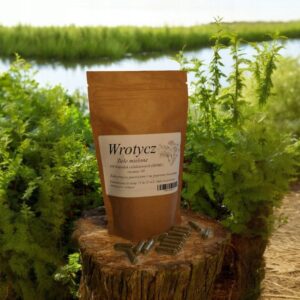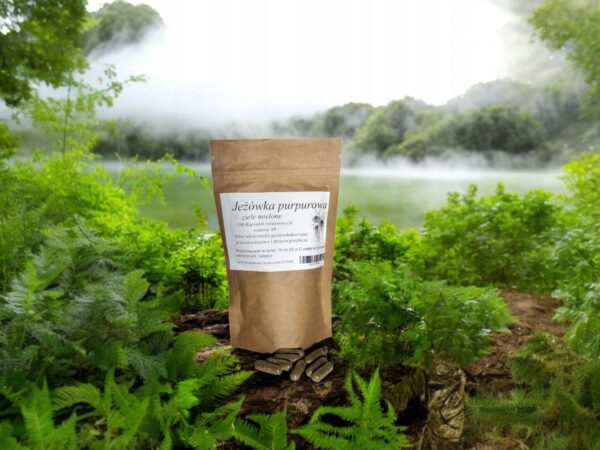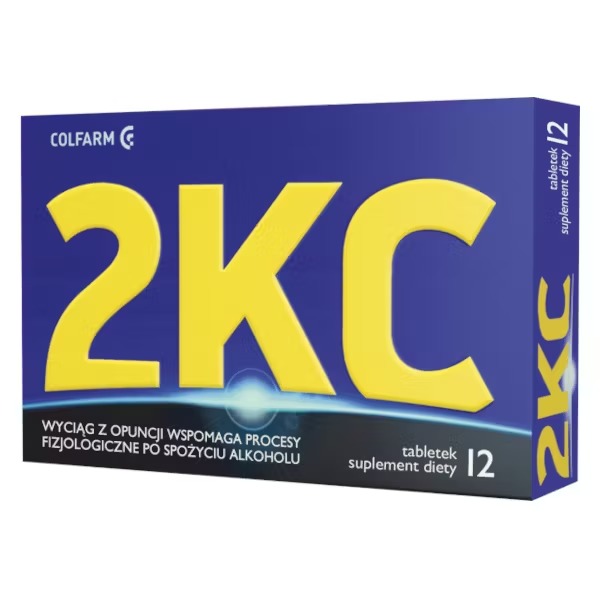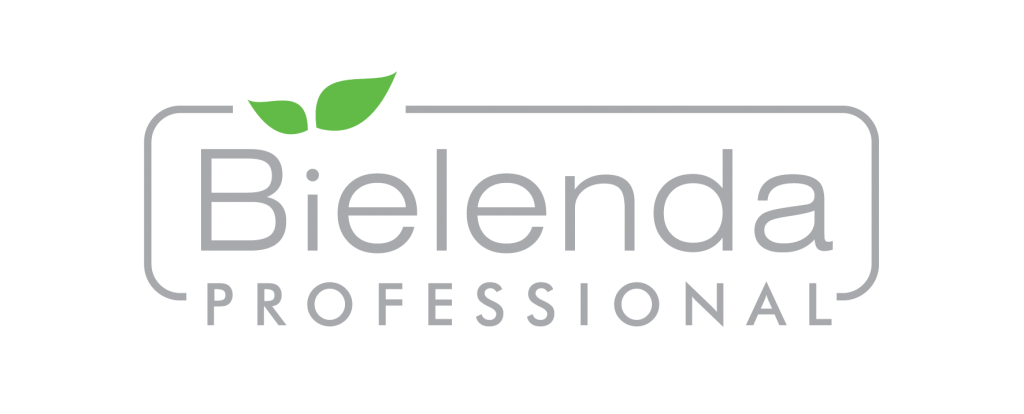Contents : 100 gelatin capsules
- Directions for use: 1 – 2 capsules once a day with a meal and water, do not exceed the dose.
- Storage conditions: Store in a dry, dark place out of reach of children.
- NOTES: Do not exceed the recommended daily dose. Not for use by pregnant or lactating women or children under 7 years of age.
- The product cannot be used as a substitute for a properly varied diet.
Echinacea – what is it?
Purple coneflower (Latin: Echinacea purpurea) is a perennial plant from the Asteraceae family. It comes from North America. It is also cultivated in Asia and Europe. Its properties were already appreciated by American Indians. For centuries, it has been used to alleviate skin diseases and ailments after burns, bites, and eczema. It was used to treat colds, fevers, and digestive problems. Its popularity began to grow in Europe in the 1930s. Currently, this herb is used to produce dietary supplements, cosmetics, medicines, and medical products.
Purple coneflower (Echinacea purpurea) – active ingredients
In medicine, the herb and root of Echinacea are used. The chemical composition of this plant includes flavonoids (derivatives of quercetin and kaempferol), chicory acid, echinacoside and alkamides, as well as polysaccharides with immunostimulating effects.
Purple coneflower – medicinal properties
The mechanism of pharmacological action of echinacea is very complex. It consists of many factors. It accelerates the healing processes of the epidermis by activating regenerative processes. It deactivates the enzyme responsible for the degradation of hyaluronic acid, which indirectly protects the skin from losing elasticity. It has anti-inflammatory effects. It neutralizes free oxygen radicals induced by UV radiation, slowing down the skin aging processes. It increases the body’s resistance to bacterial, viral and fungal infections. The herb and juice of fresh echinacea improve respiratory efficiency. For this reason, they are used in respiratory diseases.
Purple coneflower – effect on the immune system
Echinacea stimulates the immune system. It intensifies the process of phagocytosis (the absorption and destruction of pathogens and dead cells). It stimulates leukocytes to secrete antiviral substances such as interferons, in particular interferon β. It increases the activity of macrophages (phagocytic cells), which, as a result of the secretion of interleukin-1, stimulates lymphocytes, i.e. cells that form the basis of the specific immune response. This translates into increased resistance to viral, fungal and bacterial infections. In the case of infection, it shortens its duration. Such properties of echinacea preparations are attributed to caffeic acid derivatives (chicoric acid, echinocoside), lipophilic alkamides and polysaccharides.
Echinacea purpurea – use
The healing properties of echinacea have earned it a place among the most commonly used plant materials. Echinacea-based preparations are used in the case of:
- weakening of the body
- recurrent upper respiratory tract infections
- tendency to catch colds
- during long-term administration of antibiotics
- in the prevention of infections
How to use echinacea for a cold?
According to the latest research, it is recommended to use echinacea preparations for no longer than 10 days when administered daily, and 20 days – when administered every other day. Before the next treatment, a break of about 10 days should be made.
Purple coneflower – contraindications to use
Echinacea should not be administered in the case of allergies to plants of the asteraceae family, in patients with tuberculosis, leukemia, AIDS, systemic lupus erythematosus, collagenosis and in the case of severe liver impairment. It is not recommended for use in pregnant or breastfeeding women, children under 4 years of age and children with atopic asthma.
Echinacea – drug interactions
When using echinacea, as with other herbs, caution should be exercised. Echinacea preparations may interact with immunosuppressive drugs (cyclosporine), which are used, among others, after organ transplants to prevent their rejection. It should not be administered to people taking drugs that impair liver function, including amiodarone, ketoconazole, methotrexate, anabolic steroids.






































Reviews
Clear filtersThere are no reviews yet.